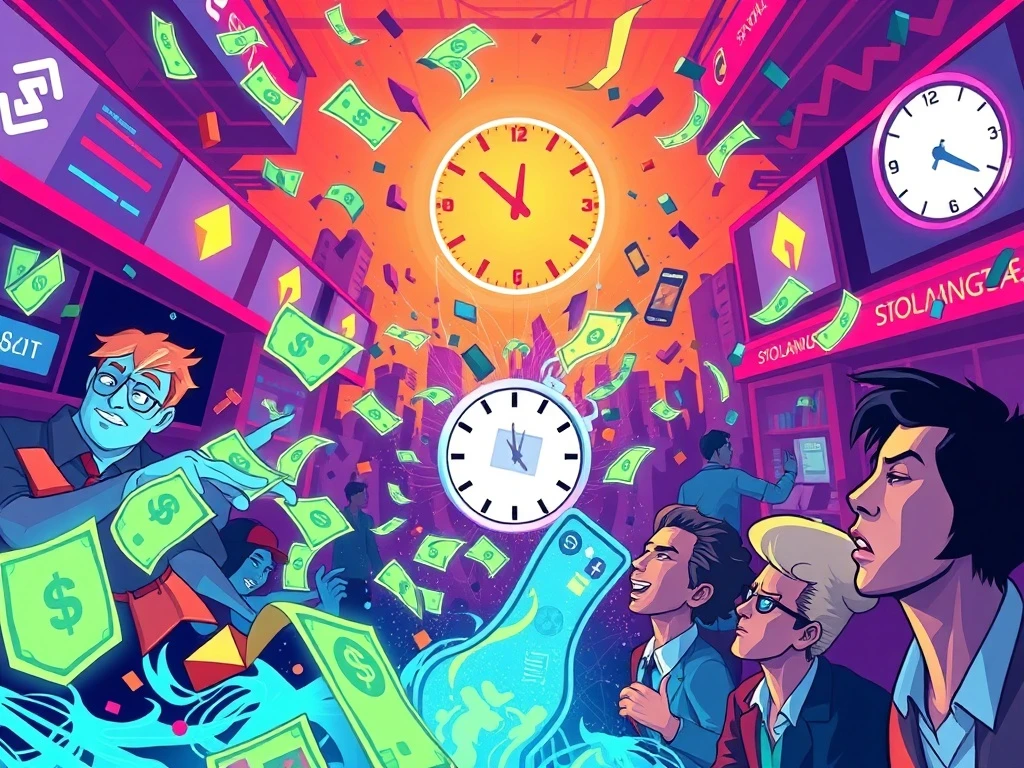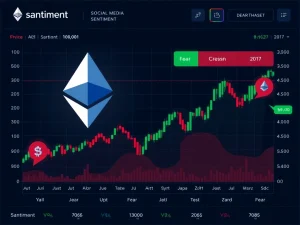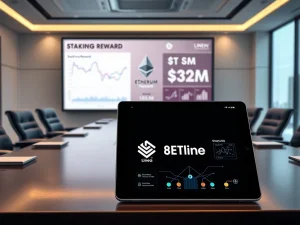Solana Meme Coin Mania: Pump.fun’s Explosive $500M Token Sale Fuels Retail Crypto FOMO

The cryptocurrency world is no stranger to rapid, high-stakes events, but even seasoned observers were left astonished by a recent phenomenon on the Solana blockchain. On July 12, 2025, Pump.fun, a platform specializing in the creation and launch of meme coins, executed an unprecedented token sale that saw an astounding $500 million worth of tokens sold in a mere 12 minutes. This event isn’t just a headline-grabber; it’s a stark illustration of the powerful, often irrational, dynamics of retail crypto investor behavior, largely driven by the pervasive fear of missing out (FOMO).
Understanding the Pump.fun Phenomenon and Solana Meme Coins
Pump.fun has rapidly carved out a niche within the Solana ecosystem, becoming a go-to platform for aspiring meme coin creators and eager retail investors. Its appeal stems from several key factors:
Low Transaction Fees: Solana’s inherent efficiency means gas fees are significantly lower compared to other blockchains, making micro-investments in new tokens more accessible.
High-Speed Execution: Solana’s throughput allows for rapid transaction processing, crucial for high-volume events like token sales where every second counts.
Simplified Token Creation: Pump.fun democratizes the process, enabling anyone to launch a token with minimal technical knowledge, fostering a continuous stream of new, speculative assets.
Scarcity-Driven Approach: By structuring sales with limited supply and rapid timelines, the platform intentionally amplifies urgency and speculation, feeding directly into the crypto FOMO mentality.
The recent $500 million sale, where 12.5% of Pump.fun’s total token supply was offered, saw over 10,000 unique wallets participate. A staggering $448 million of the total proceeds were processed directly on the Solana blockchain, underscoring the network’s capacity and the sheer volume of capital rushing into these speculative assets.
The Anatomy of a Blazing Token Launch
The July 12th Pump.fun sale was a masterclass in generating hype and capitalizing on investor frenzy. Here’s a breakdown of how the platform orchestrated this rapid token launch:
Pre-Funding Wallets: Pump.fun strategically encouraged users to pre-fund their wallets via its PumpSwap platform. This seemingly innocuous feature played a crucial role, enabling instant liquidity and accelerating capital inflows once the sale went live. It eliminated the friction of last-minute transfers, ensuring participants could jump in immediately.
Immediate Liquidity: The design ensured that capital was ready to flow, facilitating near-instantaneous purchases. This ‘click-and-buy’ mechanism significantly contributed to the rapid sell-out.
Strategic Lock-ups: Transfers of the newly acquired tokens were locked for 72 hours. This mechanism, while seemingly a security feature, amplified urgency and speculation. It prevented immediate sell-offs, potentially stabilizing the initial price and creating a sense of pent-up demand, further fueling retail excitement.
The token’s initial price of $0.004 surged to $0.006 within hours on exchanges like Hyperliquid. This immediate price appreciation created a lucrative opportunity for short-term traders, who skillfully exploited the liquidity gap, buying low during the sale and offloading for quick profits as soon as the token hit exchanges.
Beyond the Hype: Strategic Moves and Underlying Risks for Retail Crypto Investors
In the wake of its explosive sale, Pump.fun announced strategic moves aimed at solidifying its provisional $4 billion valuation and addressing criticisms. These included:
Token Buybacks: Funded by trading fees generated on the platform, these buybacks are intended to reduce circulating supply and potentially support the token’s price, signaling a commitment to long-term value.
Acquisition of Kolscan: The purchase of Kolscan, a Solana analytics tool, suggests a move towards providing more data and transparency, potentially to legitimize the platform and offer users better insights.
However, beneath the surface of innovation and strategic maneuvers lie significant risks, particularly for unsuspecting retail crypto investors. Onchain data has revealed concerning tactics, such as whales distributing tokens across 500 wallets to circumvent anti-fraud measures and avoid detection. Critics are vocal about the platform’s role in facilitating speculative ‘pump-and-dump’ schemes, where early investors inflate prices before offloading their holdings, leaving latecomers with significant losses.
A stark warning comes from Solidus Labs, an on-chain security firm, which reported that a staggering 98.6% of tokens launched on Pump.fun have ultimately failed, retaining less than $1,000 in liquidity. This statistic paints a grim picture of the sustainability and inherent risk of most projects on the platform.
Legal Scrutiny and Regulatory Challenges for Solana Meme Coins
The immense popularity and speculative nature of Pump.fun’s offerings have not gone unnoticed by regulators. The platform is facing increasing legal scrutiny:
U.S. Class-Action Lawsuit: A class-action lawsuit in the United States alleges unregistered securities sales, a common legal challenge for many crypto projects that launch tokens without formal registration with regulatory bodies.
UK Financial Conduct Authority (FCA) Ban: The UK’s FCA has banned local participation in Pump.fun activities due to regulatory non-compliance, highlighting a growing global trend of regulators cracking down on unregulated crypto offerings.
These legal and regulatory actions underscore the tension between decentralized innovation and the need for investor protection in a rapidly evolving financial landscape. While Pump.fun’s success reflects a broader shift in DeFi token launches, its reliance on short-term speculation and lack of fundamental project utility raise serious questions about its long-term sustainability and ethical implications.
The Broader Impact on the 2025 Crypto Landscape
Despite infrastructure challenges—including API outages on major exchanges like KuCoin and Bybit during the sale, indicating the sheer volume of traffic—Pump.fun’s success cannot be ignored. The platform’s livestreamed token creation process and gamified incentives mirror the viral mechanics of social media, effectively catering to a new generation of retail investors who are accustomed to instant gratification and community-driven trends. This approach democratizes token creation, allowing virtually anyone to participate, but also amplifies the risks associated with highly speculative assets.
The $500 million sale, combined with an earlier $700 million private funding round, firmly positions Pump.fun as a high-stakes player in the 2025 crypto landscape. While proponents argue it democratizes token creation and offers unprecedented access to early-stage projects, critics emphasize the inherent risks of unregulated markets and the potential for significant financial harm to unsophisticated investors.
As regulatory frameworks continue to evolve globally, the case of Pump.fun serves as a critical illustration of the ongoing tension between innovation and investor protection. It highlights the urgent need for clear guidelines that foster technological advancement while safeguarding individuals from the pitfalls of highly speculative and potentially manipulative markets. For investors, the Pump.fun saga is a powerful reminder that while the allure of quick gains is strong, thorough due diligence and a deep understanding of the underlying risks are paramount.
Frequently Asked Questions (FAQs)
Q1: What is Pump.fun and why is it so popular for Solana meme coins?
Pump.fun is a platform on the Solana blockchain that allows anyone to create and launch meme coins easily. Its popularity stems from Solana’s low transaction fees and high speed, combined with Pump.fun’s user-friendly interface and scarcity-driven sales tactics, which create significant buzz and attract retail crypto investors looking for quick gains.
Q2: What does ‘crypto FOMO’ mean in the context of Pump.fun’s token launch?
‘Crypto FOMO’ (Fear Of Missing Out) refers to the anxiety investors feel when they see others making profits from a cryptocurrency and fear they will miss out on similar opportunities. In Pump.fun’s case, the rapid $500 million sale in 12 minutes, coupled with immediate price surges, created intense FOMO, pushing many retail investors to buy quickly without extensive research.
Q3: What are the main risks of investing in Pump.fun meme coins?
The primary risks include high volatility, the potential for ‘pump-and-dump’ schemes, and a high failure rate (Solidus Labs reported 98.6% of Pump.fun tokens fail). There’s also regulatory risk, with legal scrutiny and bans from authorities like the UK’s FCA due to allegations of unregistered securities sales and non-compliance.
Q4: How does Pump.fun’s strategy amplify urgency and speculation?
Pump.fun employs several strategies to amplify urgency: offering a limited percentage of total supply, selling out in minutes, and locking token transfers for a period (e.g., 72 hours). They also encourage pre-funding wallets via PumpSwap, enabling instant participation and creating a competitive, fast-paced environment that fuels speculation.
Q5: What does the Pump.fun event tell us about the broader crypto market?
The Pump.fun event highlights a growing trend in DeFi towards gamified, social media-like token launches that appeal to a new generation of retail investors. While it showcases innovation in token distribution and the power of community, it also underscores the ongoing tension between rapid technological advancement and the critical need for robust investor protection in unregulated markets.








